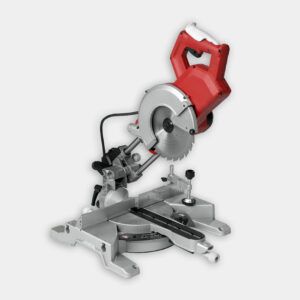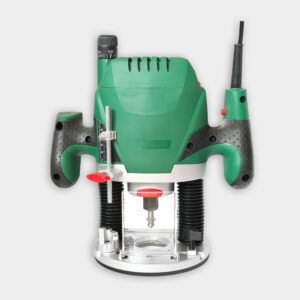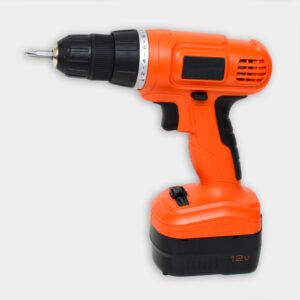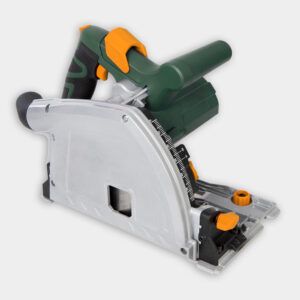Project details
Skill
Cost
Estimated Time
We may be compensated if you purchase through links on our website. Our team is committed to delivering honest, objective, and independent reviews on home products and services.
Adding a workbench to your workshop can provide a stable surface for your projects, improve organization, and add extra storage space. With this affordable do-it-yourself (DIY) project, you can create a high-quality workbench and customize it with accessories to meet your specific project needs. In the video above, This Old House general contractor Tom Silva helps a woodworker build a workbench, demonstrating key techniques and tools along the way. In the following guide, we’ll explain how to build a workbench, from the materials and tools you need to each step of the process.
Materials and Tools Needed To Build a Workbench
Here are the tools and materials you’ll need to build your workbench:
Boards and Lumber
- Medium Density Fiberboard (MDF) sheets
- 2×3 lumber
- 2×4 lumber
Hardware and Fasteners
- Corner brackets
- Wood screws
Tools
- Drill
- Miter saw
- Router
- Sandpaper
- Track saw or circular saw
Prepare the Workbench Parts
Start building your workbench by cutting the lumber to the right sizes and creating the basic frame. Take accurate measurements to ensure all of the pieces properly fit.
Cut the Legs
Use a miter saw for precise, square cuts. Cut four 2x4s and four 2x3s to 33 inches long for the bench’s legs. This height ensures a comfortable working surface for most users, including children. You can adjust these measurements, as needed.
Frame the Work Surface and Shelf
After cutting the legs, move on to cutting the work surface and shelf for your workbench:
- Cut four 2x4s to 60 inches long for the long sides of the frame.
- Cut eight 2x4s to approximately 27 inches long for the short sides and cross supports.
- Assemble the frame by laying out two 60-inch 2x4s and placing four short 2x4s between them.
- Pre-drill holes and screw through the long boards into the short boards at both ends.
- In the middle, pre-drill holes 20 inches in from both sides and attach the remaining short boards.
- Repeat this process to create a frame for the bottom shelf.
Assemble the Workbench Frame
With the components prepared, you can assemble the main structure of your workbench. This step involves connecting the prepped pieces and adding stabilizing elements to create a robust and sturdy surface.
Attach the Legs
For the first level of support, attach the legs to the surface of your workbench:
- Assemble each leg using one 2×4 and one 2×3 to form an L-shape.
- Pre-drill and screw through the 2×4 into the 2×3 to create four sturdy legs.
- Lay the benchtop frame upside down on a flat surface.
- Position a leg at each corner and drill through the leg into the frame to attach it securely.
Install the Shelf
After attaching the legs, turn the assembled benchtop and legs on their side and insert the shelf frame from the bottom of the legs. Position the shelf approximately 10 inches from the bottom of the table legs to allow foot space while providing ample storage room.
Add Stability
To ensure your workbench is stable, follow these steps:
- Cut eight corner brackets with 45-degree angles on each end.
- Install these brackets under the shelf, two for each leg.
- Screw through the brackets into the table legs and the bottom of the shelf.
Create the Work Surface
Following these steps will help you create a smooth surface that’s durable and can withstand a variety of tasks.
Cut the MDF Sheets
Use a track saw or circular saw to cut the MDF sheets to size. For the benchtop, cut a sheet to 65 inches long and 32 inches wide, allowing for an overhang. For the shelf, cut a sheet to 60 inches long and 27 inches wide to fit between the legs.
Silva walks his partner through how to use a track saw for precise cuts on the MDF sheets. Work slowly and carefully, paying close attention to your work for a clean and professional-looking finish.
Attach the Work Surface to the Frame
After cutting the MDF sheets, attach the work surface to the frame:
- Place the MDF sheet for the benchtop on the frame, ensuring an even overhang on all sides.
- Pre-drill holes through the MDF and into the frame to prevent splitting.
- Secure the top to the frame using wood screws.
- Repeat this process for the shelf, fitting it snugly between the legs.
Add the Finishing Touches
Sand the edges of the benchtop to create a smooth work surface using a rubbing block. Consider drilling or routing holes through the work surface to accommodate accessories, such as bench dogs and clamps.
How Can You Customize Your Workbench?
One advantage of building your own workbench is that you can customize it to your specific needs. Here are some ways to make your workbench more useful and transform it into a fully equipped workstation.
- Add bench dog holes: Create a jig to ensure consistent spacing for bench dog holes. Use a plunge router with a template guide to drill the holes, and space the holes evenly across the work surface for maximum versatility.
- Apply paint or stain: Paint and stain can bring out the natural beauty of a wooden workbench. Choose a paint that matches your style or complements your workshop’s interior.
- Include additional features: You can etch or stencil designs on your workbench for a custom look. You can also add features, such as a ruler, whiteboard attachment, or pencil holder, to keep your bench organized and important tools within reach.
- Incorporate storage solutions: Add drawers or shelves beneath the work surface for tool storage. You can also install a pegboard on the back of the workbench for hanging frequently used tools.
- Install a vise: Add a front vise or end vise to your workbench for increased clamping options. Choose vises that complement the size and intended use of your workbench.
Clean and Maintain Your Workbench
Regular maintenance can extend the lifespan of your workbench and ensure it stays in top shape. Here are a few ways to maintain your workbench:
- Apply a protective finish to the wood components to guard against moisture and wear.
- Check and tighten all screws and bolts often to maintain stability.
- Clean the work surface after each use to prevent dust buildup.
- Lubricate any moving parts, such as vises, to keep them functioning smoothly.




